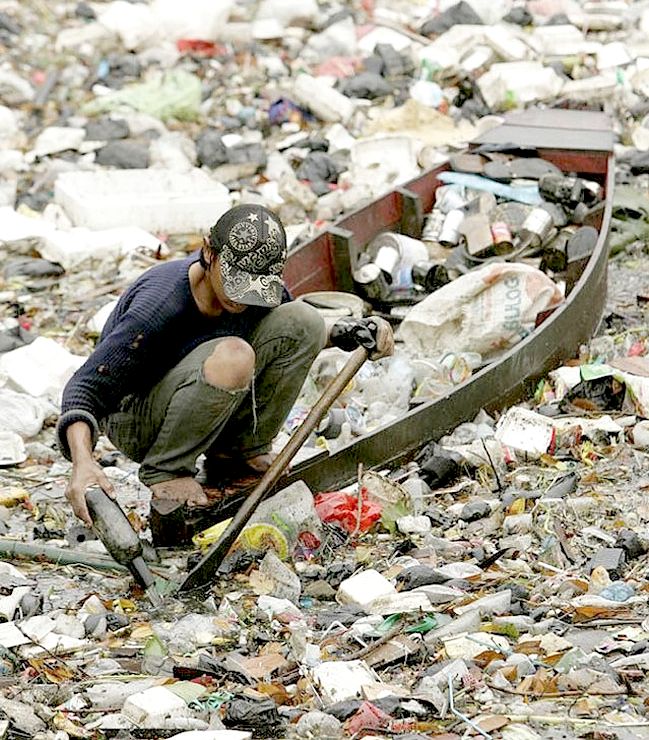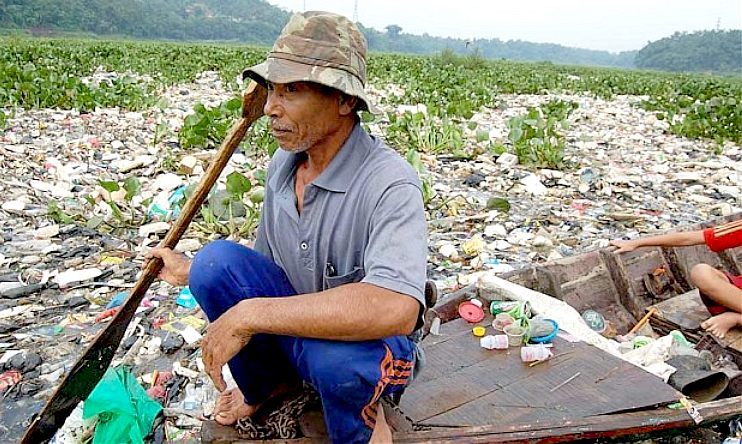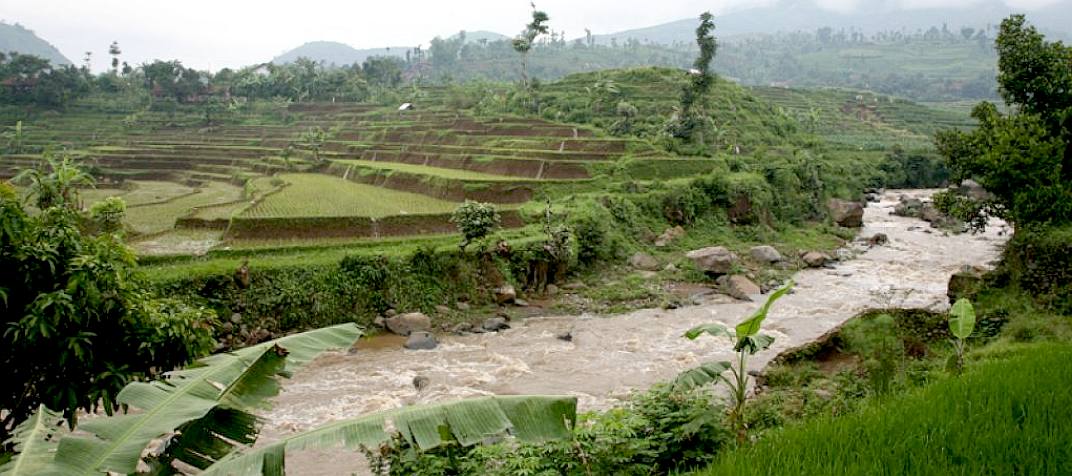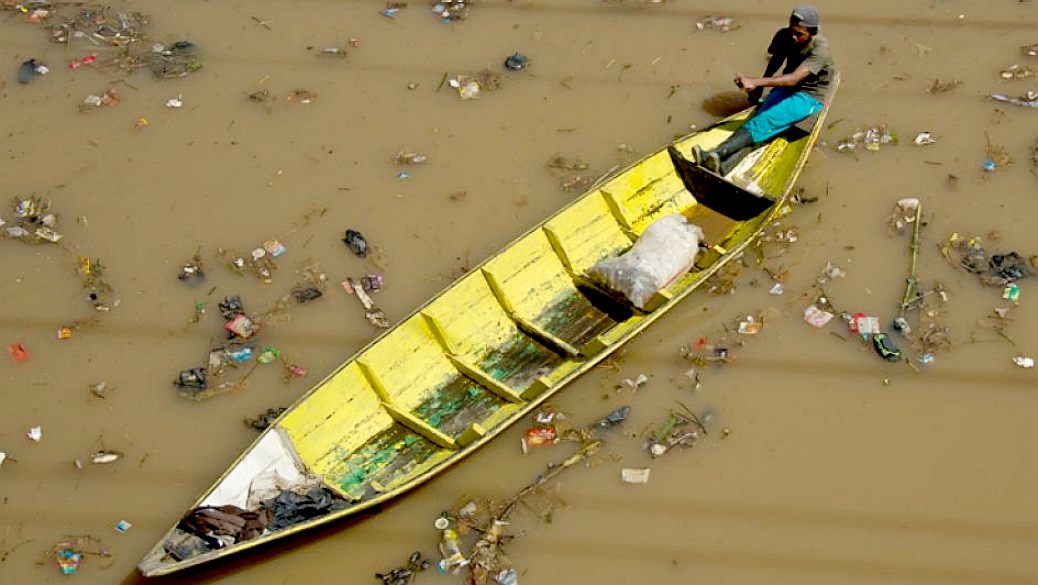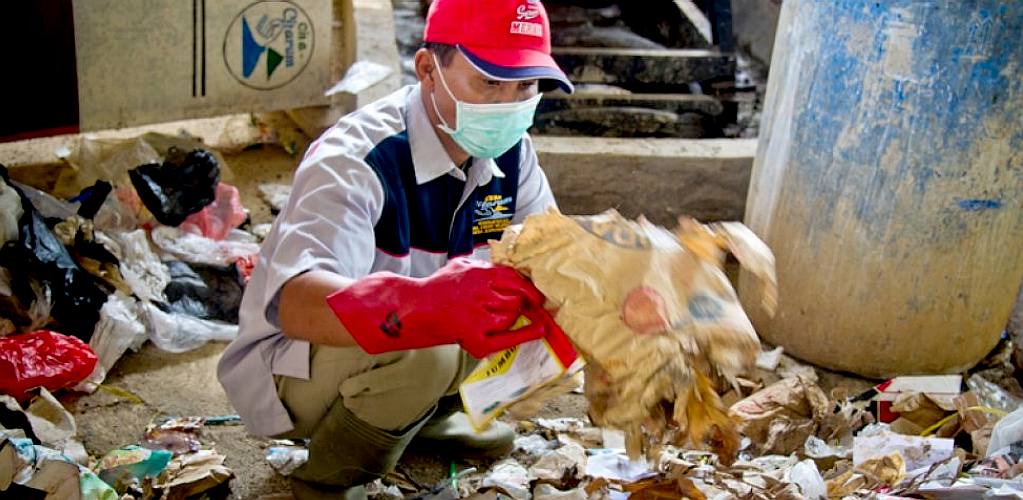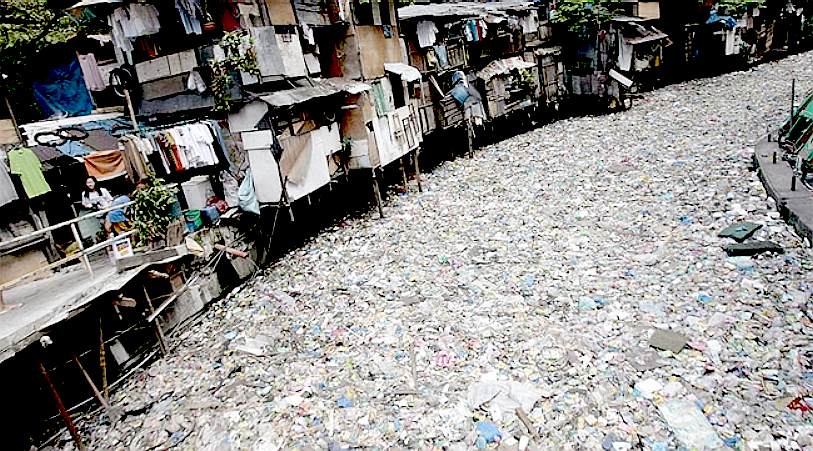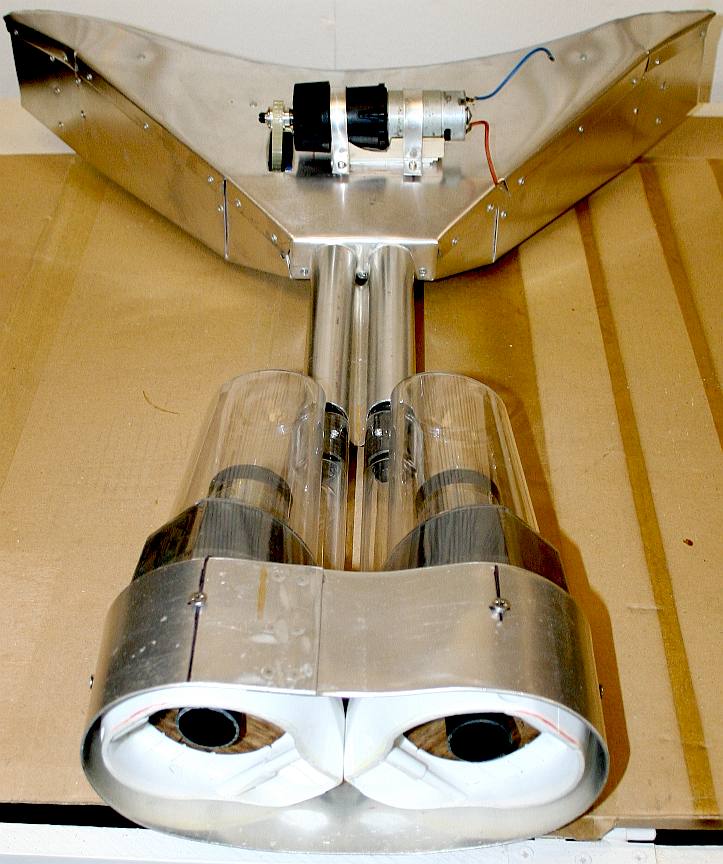|
THE RIVER CITARUM
|
||||||||||||||||||||||||||||||||||||||||||||||||||||||||||||||||||||||||||||||||||||||||||||||||||||||||||||||||||||||||||||||
|
Citarum (Sundanese: Walungan Citarum) is the longest,
largest and dirtiest river in West Java, Indonesia. It is also the third longest river in Java after Bengawan Solo and Brantas. It has an important role in the life of the people of West Java, as it supports agriculture, water supply,
fishery, industry, sewerage, electricity, etc.
ASIAN DEVELOPMENT BANK, OCTOBER 2014
The Citarum River and its tributaries in Indonesia's West Java are a vitally important water supply for both the city of Bandung and the greater Jakarta region, home to 25 million people. Its waters irrigate farms providing around 5% of the nation’s rice and feed more than 2,000 factories on its banks.
MAJOR CLEANUP UNDERWAY
THE
BUSINESS OF TRASH
TELEGRAPH APRIL 2014
THE (GENERALLY ACCEPTED) TWELVE MOST POLLUTED RIVERS IN THE WORLD
Let us not forget that in the fight against ocean pollution, it is the pollution from rivers that is discharged into the Atlantic Ocean, Indian Ocean and Pacific Oceans that is potentially the most harmful is left unchecked. Hence, the most wanted list of river authorities who need to think hard on cleaning up their act as the starting point for cleaner oceans:
1. Citarum River, Indonesia - The Citarum River is known as the most polluted river in the world and is located in West Java, Indonesia.
2. Ganges River, India - The Ganges River is considered the most sacred river in India by the Hindus. It is the third largest river in the world and it is believed that its water can cleanse the sins of people.
3. Mantanza-Riachuelo River, Argentina - The river is located in the Buenos Aires Province of central-eastern Argentina and is more than 60 kms long. The river is also known as Slaughterhouse River.
4. Buriganga River, Bangladesh - Buriganga is also known as the Old Ganges in Bangladesh. Bangladesh is one of the most densely populated countries around the world and is right now suffering from every kind of pollution that exists.
5. Yamuna River, India - The river is crystal clear and blue near its source in the Himalayas but as the river flows down the water becomes extremely polluted with sewage, industrial garbage, agricultural run- off etc.
6. Jordan River, Israel - The Jordan River originates from the Anti-Lebanon and Mount Hermon mountain ranges covers a distance of 223 km. The river has severely deteriorated especially the lower reaches of Jordan are full of untreated sewage and contaminated water flowing from agricultural lands.
7. Yellow River, China - The Yellow River of China is drying up fast due to expansion of factories, cities, agricultural farms etc. and whatever water is left is contaminated badly. The water is so toxic that it is not fit for agriculture.
8. Marilao River, Philippines - The Marilao River flows through the Bulacan Province Philippines and empties in Manila Bay. The main sources for polluting this river are tanneries, textile factories, piggeries, gold refineries and municipal dumps.
9. Sarno River, Italy - The Sarno River is one of the most polluted rivers in Europe. It flows in southern Italy near Pompeii and Naples. In recent years many cases of liver cancer have been reported which shows the level of degradation of the river.
10. Mississippi River, USA - The Mississippi River in USA is also known as the ‘Big Muddy’ as the water of this river is usually brown because of pollution. Crude oil spills reported in the river which has made the water toxic and is poisonous to the marine life. The river is a sewer for farmers and industrialists making it one of the most polluted rivers in the world.
11. Cuyahoga River, USA - The Cuyahoga River flows through Cleveland, Ohio and is known for having caught fire many times. The river is completely choked with oil, sludge, sewage and debris.
12. Pasig River,
Philippines - The Pasig river is a 27 km long river in Philippines which passes from west of Laguna de Bay and moves downstream to east of Manila Bay. This river
is termed biologically dead.
RIVER CEREMONY - At the aarti ceremony, the clouds of smoke transform into small balls of fire and singers praise Shiva, the Destroyer. The water really is pleasant, warm and soft with a light slippery feel from the pollution. A boatman says he thinks the water is clean though brown like chai tea from the mud. After the monsoon the silt settles down. Many think that the mud neutralizes the river’s harmful impurities. These include human ashes, expired livestock, and the anchored bodies of lost children.
PROPOSED SEAVAX RIVER POLLUTION (PART) SOLUTION
The only significant advantage to using SeaVax as a platform to develop a river cleaning solution, is that the vessel is powered by over 80kW of energy harvested from nature. This is important, because if the craft can be converted to clean effluent and metals from river water (not on the agenda at the moment, but we are willing to undertake studies if properly underpinned) whatever assistance that may provide is sustainable in energy terms, in a circular economy.
The most obvious hurdle in defining any kind of assistance to the beleaguered nations in this case is: How do you treat a billion liters of water divided into hundreds of locations. It looks as though the problem is insurmountable. But is it?
1. The first thing is to consider is to deploy several dozen ocean dustcarts to deal with surface litter that would otherwise find its way into the open ocean and feed the 5 main Gyres. This is not only doable but a must.
2. The second is to decide whether to deploy SeaVax oil spill boats to rivers that are known to be oil toxic.
3. The third is to undertake a feasibility study as to the possibility of modifying SeaVax units to deal with industrial waste and sewage at selected points of discharge. The issue here is likely to be volume where sedimentation tanks would need to be voluminous and SeaVax is a mobile solution. If deployed at known discharge points, that may negate the volume issue to some extent.
PROOF OF CONCEPT MILL & SINGLE STAGE FILTRATION - In this photograph you can see the experimental motorised mill head and hydro-cyclonic filtration chambers of the SeaVax test boat under construction. The full size version of this is 14 metres (44 feet) wide and includes two more stages of filtration that we cannot show here due to patent laws prohibiting publication before grant. This unit showed us what was possible and what to develop next. Nobody else anywhere in the world is developing such a system.
ACIDIFICATION - ADRIATIC - ARCTIC - ATLANTIC - BALTIC - BAY BENGAL - BERING - CARIBBEAN - CORAL - EAST CHINA ENGLISH CH - GOC - GULF GUINEA - GULF MEXICO - INDIAN - IOC - IRC - MEDITERRANEAN - NORTH SEA - PACIFIC - PERSIAN GULF RED SEA - SEA JAPAN - STH CHINA - PLASTIC - PLANKTON - PLASTIC OCEANS - SEA LEVEL RISE - UNCLOS - UNEP - WOC - WWF
AMAZON - BURIGANGA - CITARUM - CONGO - CUYAHOGA - GANGES - IRTYSH - JORDAN - LENA - MANTANZA-RIACHUELO MARILAO
- MEKONG - MISSISSIPPI - NIGER - NILE
- PARANA - PASIG - SARNO - THAMES -
YANGTZE - YAMUNA - YELLOW
LINKS & REFERENCE
IB Times India million litres untreated sewage polluting holy river ganga says report Inspired Economist 2015/01/14 India uses zero liquid discharge technology for Ganges river Haaretz Israel Ganga pollution news science Central Pollution Control Board of India listaka top 12 most polluted rivers in the world Hubpages politics what are the 10 Most Polluted Rivers in the World Listdose top 10 polluted rivers world Austro Indonesian Arts Program blog most polluted river in the world Citarum The Guardian environment 2014 January 2 plastic waste river Thames marine life report Telegraph UK news 2014 Citarum the most polluted river in the world Asian Development Bank cleaning Indonesias Citarum basin http://www.adb.org/features/cleaning-indonesias-citarum-basin http://www.telegraph.co.uk/news/earth/environment/10761077/Citarum-the-most-polluted-river-in-the-world.html https://en.wikipedia.org/wiki/Citarum_River http://www.theguardian.com/environment/2014/jan/02/plastic-waste-thames-marine-life-report http://www.austroindonesianartsprogram.org/blog/most-polluted-river-world-citarum-river-indonesia http://hubpages.com/politics/What-Are-the-10-Most-Polluted-Rivers-in-the-World http://listdose.com/top-10-polluted-rivers-world/ http://listaka.com/top-12-most-polluted-rivers-in-the-world/ http://www.cpcb.nic.in/water.php http://www.haaretz.com/israel-news/science/1.666846 http://inspiredeconomist.com/2015/01/14/india-uses-zld-ganges-river/ http://www.ibtimes.co.uk/india-million-litres-untreated-sewage-polluting-holy-river-ganga-says-report-1491715 http://asia.nikkei.com/Politics-Economy/International-Relations/China-India-rivalry-grows-over-infrastructure-projects
|
||||||||||||||||||||||||||||||||||||||||||||||||||||||||||||||||||||||||||||||||||||||||||||||||||||||||||||||||||||||||||||||
|
This
website is Copyright © 2024 Bluebird Marine Systems Limited.
The names Bluebird™, Bluefish™,
Miss
Ocean™, RiverVax™,
SeaNet™,
SeaVax™
and the blue bird in flight
|
